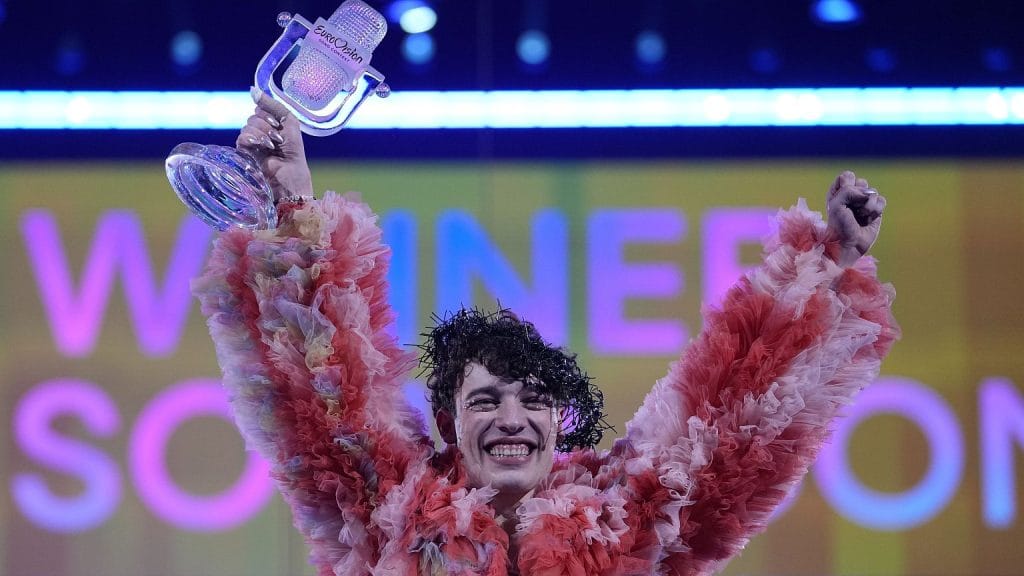Pink, often associated with notions of femininity, delicacy, and love, is a color that evokes strong emotions and opinions. However, beneath its seemingly innocuous facade lies a world of controversies waiting to be unveiled. In this blog, we delve deep into the intricate web of pink controversies, exploring the societal, cultural, and even political drama that surrounds this seemingly innocent hue.
The latest internet controversy… are these shoes gray and teal or pink and white? I see both! pic.twitter.com/Z0QDmd8UJd
— Abby Ham (@WBIRAbby) May 6, 2019
Introduction: Understanding the Significance of Pink
Pink controversies have always been a topic of intrigue, sparking debates and discussions across various platforms. The color pink, often associated with femininity and softness, holds a deeper significance in our society. It represents compassion, love, and the nurturing aspect of humanity. However, in recent times, pink has also become a symbol of rebellion, challenging traditional gender norms and breaking stereotypes.
The Evolution of Pink
Originally perceived as a color for baby girls, pink has evolved to encompass a wider spectrum of meanings. From promoting breast cancer awareness to standing against gender discrimination, pink has transcended its conventional associations.
The Controversies Surrounding Pink
Despite its positive connotations, pink controversies have emerged due to its stereotypical representation of gender. The debate over whether pink reinforces gender stereotypes or empowers individuals to express themselves freely continues to divide opinions.

The Evolution of Pink: From Gender Stereotypes to Empowerment
Pink controversies have long been a topic of discussion, especially concerning gender stereotypes and empowerment. In recent years, the color pink has undergone a transformation from being associated solely with femininity to symbolizing strength, confidence, and empowerment for all individuals. This shift reflects changing societal norms and challenges traditional perceptions of colors and their meanings.
Breaking Gender Norms
Historically, pink was strongly linked to traditional gender roles, with girls dressed in pink and boys in blue. However, this binary perception has evolved, leading to a more inclusive and diverse understanding of colors. Today, pink is celebrated for its ability to transcend stereotypes and empower individuals to express themselves freely.
Empowering Movements
The rise of movements such as #PinkNotWeak has further propelled the empowerment associated with the color pink. This movement challenges the notion that pink is a weak or submissive color and instead promotes it as a symbol of resilience and inner strength. By embracing pink, individuals can reject outdated stereotypes and embrace their authentic selves.
View this post on Instagram
Historical Controversies Surrounding Pink
Pink controversies have stirred debates throughout history, challenging societal norms and perceptions of the color. In the 18th century, pink was considered a masculine color, while blue was associated with femininity. This notion flipped in the early 20th century, sparking discussions on gender stereotypes and color symbolism.
The Pink and Blue Debate
During the 1920s, a shift occurred in the perception of pink and blue, leading to the establishment of gender-specific colors. Pink controversies emerged as marketing strategies promoted pink for girls and blue for boys, solidifying these associations in popular culture.
Political Pink
In recent years, pink has become a symbol of political activism and empowerment. Movements such as the Women’s March and Breast Cancer Awareness have utilized pink as a unifying color, emphasizing strength and solidarity.
Modern-Day Controversies: Pinkwashing and Cultural Appropriation
In the realm of Pink controversies, two hot-button topics that have sparked debates are pinkwashing and cultural appropriation. Pinkwashing refers to the practice of using the color pink or themes associated with femininity to convey a sense of support for the LGBTQ+ community or other social causes, often for marketing purposes.
Pinkwashing in Marketing
Companies have been accused of pinkwashing by leveraging the color pink in their branding without implementing genuine support for LGBTQ+ rights. This phenomenon can mislead consumers and overshadow the importance of authentic activism.
Cultural Appropriation and Pink Culture
On the other hand, the issue of cultural appropriation arises when aspects of pink culture, historically significant to LGBTQ+ and marginalized communities, are adopted without proper acknowledgment or respect for their origins.
- This appropriation diminishes the significance of pink symbolism and erases the struggles faced by the communities that initially embraced it.

Impact of Pink Controversies on Society and Culture
Pink controversies have had a profound impact on society and culture, stirring up debates and discussions across various platforms. The color pink, often associated with femininity and stereotypes, has found itself at the center of controversies that have challenged traditional norms and perceptions.
Challenging Gender Norms
The controversies surrounding the color pink have played a significant role in challenging gender norms and stereotypes. Pink, long considered a color for girls, has sparked conversations about the need to break free from rigid gender categorizations.
This discourse has led to a reevaluation of societal expectations, encouraging individuals to embrace colors based on personal preference rather than societal constructs.
Influence on Fashion and Design
The pink controversies have also influenced the world of fashion and design. Designers and creatives have used pink as a tool to subvert traditional notions of gender and create inclusive and diverse clothing lines.
- This shift in the fashion industry has led to the emergence of gender-neutral and gender-fluid collections that celebrate individuality and diversity.
- Pink has become a symbol of rebellion and empowerment, breaking away from its conventional associations with femininity.
Exploring the Intersection of Pink with Gender, Identity, and Expression
Pink controversies have long been intertwined with discussions around gender stereotypes, identity norms, and self-expression. This color, often associated with femininity, has sparked debates on societal expectations and the fluidity of gender roles.
View this post on Instagram
The Evolution of Pink in Gender Norms
Historically, pink was not always linked to girls, and blue was not always associated with boys. The shift in these color norms occurred in the mid-20th century, reflecting changing attitudes towards gender roles.
This shift emphasizes how colors can be socially constructed and assigned specific meanings over time.
Pink as a Tool for Self-Expression
For many individuals, pink serves as a symbol of empowerment and assertion of personal identity. Breaking away from traditional gender norms, people use pink as a bold statement of their unique self-expression.
- Pink hair, pink clothing, and pink accessories are just some ways individuals embrace this color to challenge stereotypes and celebrate diversity.
Frequently Asked Questions
- Why is pink considered a controversial color?
- Pink has been associated with various controversies and stereotypes over the years, including gender roles, sexual orientation, and societal expectations. These associations have led to debates and discussions about the significance of the color pink.
- How has pink been linked to gender controversies?
- Pink is often stereotypically associated with femininity, leading to debates about gender norms and how colors are assigned based on gender. This association has sparked discussions about breaking gender stereotypes and embracing a more inclusive view of colors.
- Are there historical controversies related to the color pink?
- Yes, there have been historical controversies surrounding the color pink. For example, in the early 20th century, pink was considered a color suitable for boys, while blue was associated with girls. This historical shift in gender color norms reflects changing societal perceptions over time.
- What role does pink play in the LGBTQ+ community?
- Pink has been used as a symbol in the LGBTQ+ community, particularly through the pink triangle, which has historical significance related to LGBTQ+ rights and activism. The color pink continues to be a powerful emblem of LGBTQ+ solidarity and pride.
- How has the perception of pink evolved over time?
- The perception of pink has evolved significantly over time, shifting from a color associated with masculinity to one linked predominantly with femininity. As societal views on gender and identity continue to evolve, the meaning of pink has also transformed.
In Conclusion
From gender stereotypes to social movements, the color pink has been a subject of intense debate and varied interpretations throughout history. In our exploration of the drama behind pink, we have delved into its significance, symbolism, and how it intersects with culture and identity. The controversies surrounding pink have highlighted the complexities of societal norms and the power dynamics at play. As we reflect on the diverse perspectives shared, it becomes evident that pink is more than just a color—it is a reflection of our collective consciousness. Let us continue to challenge preconceived notions and embrace the beauty of diversity, even in something as seemingly simple as a color.





